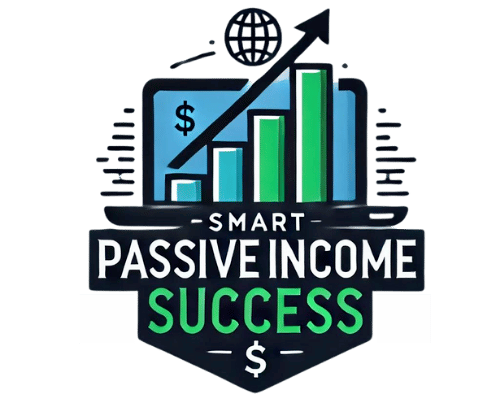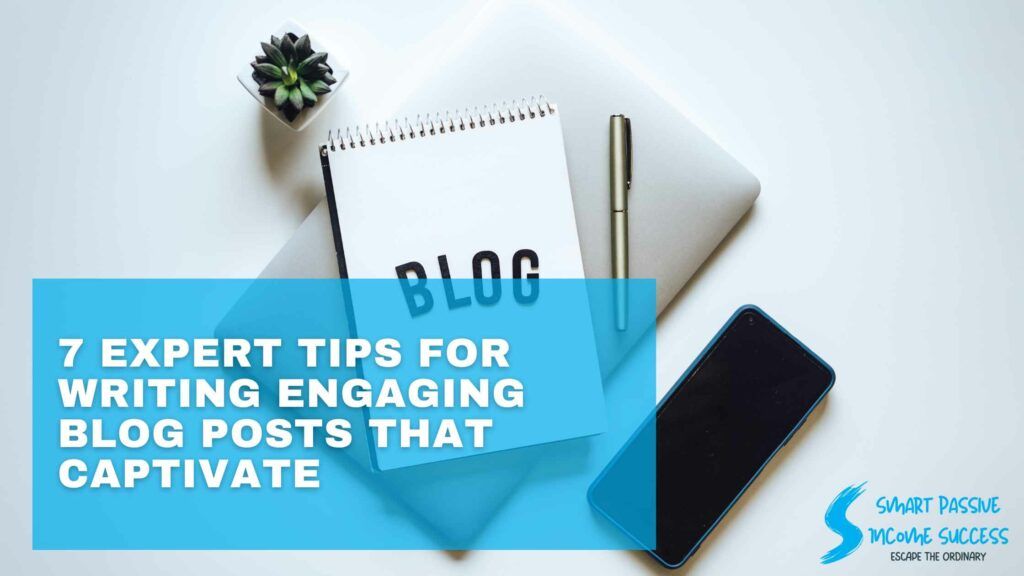I’m going to level with you: in today’s fast-paced digital world, writing engaging blog posts isn’t just a nice-to-have, it’s a must. But fear not, because I’m here to help you unlock the secrets to crafting blog content that not only draws readers in but keeps them coming back for more.
This isn’t just about stringing together a few fancy words; it’s about a strategic pivot to content that truly resonates with readers. That means putting people first, tapping into your expertise, and ensuring that what you write is not just informative, but also a delight to read. By aligning with the pillars of Experience, Expertise, Authoritativeness, and Trust (E-E-A-T), and keeping an eye on SEO, you’re on your way to stellar content.
You can always adjust your approach down the road, but starting with solid tips to hook your readers is essential. This article is packed with practical, actionable advice that will elevate your blog to the next level. So, let’s kick things off by diving into the art of crafting magnetic headlines in the next section. After all, your headline is the dazzling storefront to your blog post, setting the expectation for the treasure trove of insights waiting inside.
Table of Contents
Chapter 1: Crafting Magnetic Headlines

In the vast sea of content on the internet, your headline is the first—and perhaps only—impression you make on a potential reader. A great headline can mean the difference between a scroll and a click. It’s your first chance to grab attention, create curiosity, and promise value. Here’s how you can craft headlines that captivate and compel readers to dive into your blog post.
1. Make it Clear and Specific
A vague headline is a missed opportunity. Be clear about what your readers can expect from your post. Specificity not only draws in readers but also ensures that those who click are genuinely interested in your content. For example, “7 Tips for Writing Engaging Blog Posts” is more compelling than “How to Write a Blog.”
2. Use Numbers and Lists
Lists are inherently attractive because they promise a quick, digestible read. Incorporating numbers in your headline provides structure and sets clear expectations. “7 Tips” is more inviting than “Tips.” Odd numbers, like 7, are often more eye-catching than even numbers.
3. Incorporate Power Words
Power words evoke emotion and action. Words like “Ultimate,” “Essential,” “Proven,” and “Effective” can make your headline more enticing. For instance, “7 Proven Tips for Writing Engaging Blog Posts” carries more weight than simply “Tips for Writing Blog Posts.”
4. Create a Sense of Urgency or Curiosity
Encouraging readers to act now or piquing their curiosity can drive clicks. Phrases like “Must-Know,” “Before You Start,” or “You Won’t Believe” can make your headline irresistible. For example, “7 Must-Know Tips for Writing Engaging Blog Posts” suggests that the information is crucial.
5. Use Keywords Strategically
SEO is critical for visibility. Incorporate relevant keywords naturally into your headline to improve search engine ranking. Ensure your headline includes terms your audience is likely searching for, like “Engaging Blog Posts.”
6. Promise Value
Your headline should clearly convey the benefit of reading your post. It should answer the reader’s question, “What’s in it for me?” A headline like “7 Tips for Writing Engaging Blog Posts that Boost Traffic” tells the reader they will gain actionable advice that can help increase their blog’s visibility.
7. Test and Optimize
Don’t be afraid to test different headlines to see what resonates best with your audience. A/B testing can provide valuable insights into what type of headlines your readers prefer. Tools like CoSchedule’s Headline Analyzer can help you refine your headlines for maximum impact.
Examples of Magnetic Headlines:
- “7 Proven Tips for Writing Engaging Blog Posts That Readers Love”
- “Boost Your Blog’s Traffic with These 7 Essential Writing Tips”
- “Unlock the Secrets: 7 Tips for Writing Engaging Blog Posts”
- “Transform Your Blog: 7 Tips for Writing Content That Captivates”
- “7 Must-Know Tips for Crafting Engaging Blog Posts”
By applying these strategies, you’ll be able to craft headlines that not only attract clicks but also ensure that your readers stay engaged from the first word to the last. Remember, your headline is your blog post’s first impression—make it count.
Related Post: The Ultimate Guide To Starting A Blog: Beginner’s Blueprint
Turn Your Passion into Profits
Chapter 2: Mastering the Opening Hook

You’ve got a dynamite headline. Nice work. Now, what’s next? Keep the momentum going with an opening that grips your reader. Here’s how to make your first paragraph work hard to capture attention and set the tone for the rest of your post.
1. Start with a Story
Humans are hardwired for stories. They help us make sense of information. Kick off your post with a personal anecdote, a surprising fact, or a compelling question. These techniques draw readers deeper into your post. For instance, start with a scenario that your readers can relate to, like a common blogging challenge they face.
2. Use Specific Details
Sprinkle your opening lines with specific details and statistics that resonate with your readers’ experiences or challenge their assumptions. For example, “Did you know that blog posts with an engaging hook can boost reader retention by over 50%?” Specificity adds credibility and intrigue.
3. Address Pain Points
Speak directly to your readers’ problems or desires. Highlighting a common issue or question that your audience faces can make them feel understood and eager to read on for solutions. For example, “Struggling to keep your readers’ attention? You’re not alone.”
4. Make a Bold Statement
Start with a bold, provocative statement that challenges the status quo or offers a surprising perspective. This can instantly grab attention and make readers curious about your viewpoint. For instance, “Most bloggers fail because they overlook this crucial element.”
5. Promise Value
Clearly state what your readers will gain by reading your post. This sets the expectation that the time they invest in reading will be worthwhile. For example, “By the end of this post, you’ll have actionable tips to make your blog posts more engaging.”
Related Post: A Deep Dive Into The Top Blogging Platforms To Consider
Chapter 3: Structuring Your Content for Breezy Readability

Great ideas need great presentation to shine. When content is easy to read, you keep people hooked. Here’s how to make your post welcoming at first glance.
1. Short Paragraphs
Short paragraphs invite the eye to keep going, one line at a time. Think of them as breaths of fresh air for the reader, especially on mobile devices where dense text looks even more overwhelming. Aim for 2-3 sentences per paragraph.
2. Use Subheadings
Subheadings break the monotony and help readers navigate your content. They act as signposts that show what’s coming up, allowing readers to skim to the parts that interest them most. Make sure your subheadings are descriptive and provide a clear preview of the section.
3. Bullet Points and Numbered Lists
Bullet points transform a cumbersome list into an easily digestible smorgasbord of information. Numbered lists are great for steps or rankings, providing both clarity and a sense of progression. They make your content scannable and easy to follow.
4. Bold and Italics for Emphasis
Use bold or italics to grab attention or emphasise important points. This highlights key information and makes it easier for readers to scan your content. For example, use bold for main ideas and italics for quotes or important terms.
5. Incorporate White Space
White space isn’t wasted space; it’s a critical design element that gives the reader’s eyes a rest. It makes your post look clean and approachable. Ensure there’s ample spacing between paragraphs, images, and other elements.
Related Post: Your Path To Blogging Success: How To Choose The Perfect Niche
Chapter 4: Engaging the Senses with Descriptive Language

Engaging the senses with descriptive language is a sure-fire way to captivate your audience and keep them hooked on every word.
1. Paint a Vivid Picture
Use descriptive language to create vivid imagery in the reader’s mind. Instead of saying “the car is fast,” describe how “the roar of the engine sends a thrilling shiver down the spine.” Engage multiple senses to make your descriptions more immersive.
2. Use Specific and Relatable Details
Choose details that your audience can relate to. Instead of generic descriptions, use specifics that evoke a clear image or feeling. For instance, “the aroma of freshly brewed coffee” is more evocative than “a good smell.”
3. Avoid Overuse of Adjectives
While adjectives are useful, overusing them can make your writing feel cluttered. Focus on strong, precise verbs and nouns to convey your message more powerfully. For example, “the man devoured the cake” is more impactful than “the man quickly ate the delicious cake.”
4. Tailor Language to Your Audience
Consider your audience’s background and preferences. Use language that resonates with them, whether it’s technical jargon for professionals or simple terms for a general audience. The goal is clear communication, not to impress with a large vocabulary.
5. Use Active Voice
Active voice makes your sentences direct and dynamic, while strong verbs inject energy. Instead of saying “the cake was eaten by the man,” say “the man devoured the cake.” Active voice makes your writing more engaging and immediate.
Related Post: Maximise Your Blog’s Potential: A Guide To Earning Passive Income
Turn Your Passion into Profits
Chapter 5: Incorporating Visuals for Enhanced Engagement

Visuals aren’t just eye candy; they’re powerful engagement magnets. Here’s how to use them effectively.
1. Choose Relevant Visuals
Use visuals that add true value to your content. They should illustrate complex points, break up text, and make your post more engaging. Avoid generic stock photos; instead, choose images, videos, and infographics that are directly relevant to your topic.
2. Optimize for Quick Loading
Ensure your visuals are optimized for fast loading times. Large, slow-loading images can frustrate readers and negatively impact your SEO. Compress images and use the appropriate file formats to maintain quality without sacrificing speed.
3. Use Alt Text for Accessibility
Add descriptive alt text to all images. This not only improves accessibility for readers using screen readers but also helps with SEO. Alt text should describe the content and function of the image.
4. Strategic Placement of Visuals
Place visual elements strategically to maintain reader interest. An intriguing infographic after a dense paragraph can provide a much-needed pause or act as a visual summary of the preceding text. Use visuals to enhance and complement your written content.
5. Interactive and Dynamic Content
Consider using interactive elements like quizzes, polls, or interactive infographics. These can engage readers more deeply and encourage them to spend more time on your post. Videos and GIFs can also add a dynamic element to your content.
Related Post: 10 Ways To Drive Traffic To Your Blog: Expert Tips You Need To Know
Chapter 6: Inviting Interaction and Community Building

Turning passive readers into active community members can make your blog come alive and create loyal followers.
1. Encourage Comments
Ask readers for their thoughts, experiences, or questions at the end of your posts. This sets the stage for a conversation right there on your page. Make it a point to respond to comments to show you value their input and foster a sense of community.
2. Effective Calls-to-Action (CTAs)
Use CTAs to encourage readers to take specific actions, such as subscribing to your newsletter, joining a webinar, or downloading a resource. Choose actions that resonate with your audience and provide clear, compelling reasons to engage.
3. Social Sharing Features
Include easily accessible share buttons for various social platforms. Encourage readers to share your content to amplify your reach. Social sharing is like digital word of mouth and can help build your community.
4. Foster Reader Interaction
Create opportunities for readers to interact with each other. This can be through comments, forums, or social media groups. Encourage discussions and sharing of experiences related to your blog topics.
5. Consistent Engagement
Regularly engage with your community through blog posts, social media, and email newsletters. Share updates, ask for feedback, and involve your readers in the content creation process. Consistent engagement helps build strong, loyal relationships.
Related Post: Passive Income from Blogging & Affiliate Marketing
Chapter 7: Utilising Storytelling to Connect and Convey Messages

Strategic narratives can transform your blog posts from simple text into compelling experiences that linger in the minds of your audience.
1. Relatable Narratives
Craft stories that your readers can relate to. Share personal anecdotes or construct hypothetical scenarios that highlight your topic’s relevance. This makes complex or abstract concepts more relatable and digestible.
2. Emotional Connection
Tap into shared emotions and common experiences. Stories that evoke emotions like empathy, surprise, or inspiration can create a deeper connection with your audience. Use storytelling to make your readers feel understood and valued.
3. Clear Message and Purpose
Ensure your story ties into the purpose of your post. Every narrative should illustrate a point or convey a message that aligns with your blog’s goals. This keeps your storytelling focused and relevant.
4. Active and Dynamic Language
Use active voice and strong verbs to make your stories more dynamic. Instead of passive constructions, choose the language that creates vivid and engaging scenes. For example, “She sprinted to the finish line, heart pounding” is more engaging than “The finish line was approached by her quickly.”
5. Seamless Integration with SEO
Incorporate keywords naturally into your storytelling. A well-told story can enhance keyword-rich content without compromising the narrative’s flow or authenticity. Balance SEO best practices with engaging, reader-friendly content.
Related Post: Earning While You Sleep: Passive Income Strategies For Beginners
Bonus Tip: SEO Best Practices for Organic Visibility

SEO plays a critical role in the visibility of your blog posts. Here’s how to craft content that search engines love and people want to read.
1. Keyword Research
Identify terms your audience is searching for and integrate them naturally into your posts. Use tools like Google Keyword Planner, Jaaxy or Ahrefs to find relevant keywords. Think of keywords as signposts that guide readers and search engines to your content.
2. High-Quality Content
Maintaining high content quality is crucial for keeping readers engaged and sending positive signals to search engines. Write comprehensive, informative posts that provide real value to your audience.
3. Meta Descriptions
Craft compelling meta descriptions that summarise your post and entice searchers to click. These snippets should include your main keyword and a clear call to action. Think of them as your pitch on the search results page.
4. URL Structure and Title Tags
Ensure your URL structure and title tags are clear and include your main keyword. This makes it easier for search engines to crawl and index your pages. Keep URLs short and descriptive.
5. Regular Updates and Monitoring
SEO is a long-term game with ever-changing rules. Regularly update your content to keep it fresh and relevant. Monitor your performance using tools like Google Analytics and adjust your strategies based on the data.
Related Post: 10 Passive Income Ideas For Beginners
Conclusion: Continual Learning and Iteration

Writing engaging blog posts is a dynamic process where you’ll constantly learn and evolve. Here’s how to keep improving.
1. Analytics and Feedback
Pay close attention to how your audience interacts with your content. Use analytics to track page views, bounce rates, and engagement metrics. Feedback from readers can also provide valuable insights.
2. Iterative Approach
Don’t worry about getting everything perfect right off the bat. Adjust your approach based on tangible data and feedback. Your first attempt doesn’t need to be your last—continuous improvement is key.
3. Stay Informed
Stay on top of content trends and SEO updates. The digital landscape changes rapidly, and staying informed will help you maintain your edge. Follow industry blogs, attend webinars, and participate in online communities.
4. Focus on Value
Always aim to create content that offers superior value. Content that educates, entertains, and enlightens your audience will stand the test of time. Your ultimate goal is to create shared experiences that resonate deeply with your readers.
Thanks for taking the time to read this blog post. If you have any questions or wish to add, please write them in the comments below. 😉






Hi John,
I just finished reading your article “7 Expert Tips For Writing Engaging Blog Posts That Captivate,” and I have to say, it resonated deeply with my experiences as a blogger. The way you’ve detailed the significance of crafting magnetic headlines and the strategic use of SEO is not only insightful but also immediately actionable.
Your emphasis on the E-E-A-T principles (Experience, Expertise, Authoritativeness, and Trust) particularly struck a chord. It’s a reminder of the foundation we need to lay in our content to not only attract readers but also build credibility in our niche. I’ve seen firsthand how a well-thought-out headline can transform the reach of a post, and your tips on using powerful words and specificity are spot on.
I’m curious about your thoughts on the balance between SEO and maintaining a natural flow in writing. How do you ensure that the inclusion of keywords doesn’t compromise the quality of the content? Also, your point about the active voice versus the passive voice in storytelling piqued my interest. It’s something I’ve experimented with, and I’d love to hear more about your approach to choosing one over the other in different types of posts.
Thank you for sharing such valuable insights, and I look forward to incorporating these strategies into my next posts. Perhaps we could collaborate on a piece in the future or share guest posts on each other’s platforms?
Warm regards,
Eric
Hi Eric,
Thank you so much for your thoughtful comment on my article “7 Expert Tips For Writing Engaging Blog Posts That Captivate.” I’m thrilled to hear that it resonated with your experiences as a blogger and provided actionable insights.
Balancing SEO with maintaining a natural flow in writing is indeed a nuanced task. In my experience, the key is to prioritize the reader’s experience while subtly incorporating keywords. Here are a few strategies I use:
Natural Integration: Instead of force-fitting keywords, I look for natural opportunities to include them within the context of my writing. This might mean using variations of the keyword or placing it where it logically fits in the flow of the sentence.Primary and Secondary Keywords: I identify a primary keyword for the post and a few secondary ones. This allows me to spread the keyword usage naturally throughout the content without overstuffing any particular term.Focus on Synonyms and Related Terms: Using synonyms and related terms helps keep the content diverse and avoids repetitive keyword usage, enhancing readability while still signaling relevance to search engines.
As for the use of active versus passive voice, I tend to favor the active voice because it makes the content more direct and engaging. However, the choice can depend on the context and tone of the piece. For instructional or how-to posts, the active voice works well to create a sense of urgency and action. In contrast, the passive voice might be used sparingly in more formal or reflective pieces where the focus is on the action itself rather than who is performing it.
I’m delighted to hear that you’re considering incorporating these strategies into your posts. Collaboration sounds like a fantastic idea! Sharing guest posts could be mutually beneficial and provide our readers with diverse perspectives. Let’s definitely discuss this further and see how we can work together.
Thank you again for your kind words and insightful questions. Looking forward to more discussions and potential collaborations!
Warm regards,
John
Hello John and Gemma. I really enjoyed reading your post. It gives great clarity to blogging for a passive income. I never heard the term ‘passive income’ until about a year ago. Since then, I have looked into quite a few opportunities and yes there are a lot of scams out there. You have covered the need for research and how to avoid scams. Your 7 bullet points make the most sense. Since I am new to blogging and affiliate marketing, I have written them down to guide me through the process. Thank you for this post and I wish you the best.
Hello,
Thank you so much for your kind words and for taking the time to read our post! We’re delighted to hear that you found it helpful and clear, especially regarding the concept of passive income through blogging.
It’s great to hear that our 7 tips resonated with you and that you found the guidance on avoiding scams particularly useful. Entering the world of blogging and affiliate marketing can indeed be daunting with all the information out there, but taking a researched and cautious approach is key.
As you’re new to blogging and affiliate marketing, remember that consistency and continuous learning are your best friends. Don’t hesitate to experiment and find what works best for you. There are a lot of resources and communities out there that can offer support and additional insights as you progress.
We wish you all the best on your blogging journey and in your efforts to build a passive income. If you have any questions or need further advice, feel free to reach out. Thank you again for your feedback!
Best regards,
John and Gemma